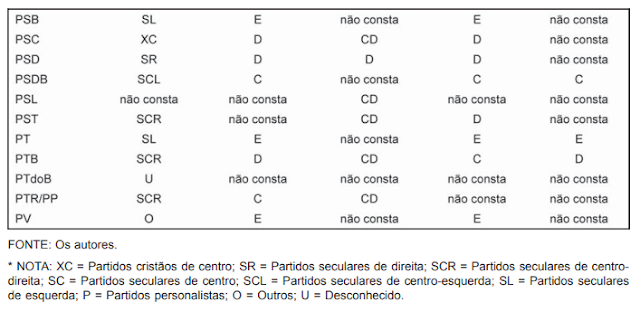Brazil has currently 35 registered parties, constituting what is probably the most shattered political system in the world. It has currently 14 effective parties in the Lower House (see Figure 1), and its three last congress elections (2006, 2010, and 2014) produced some of the most fragmented legislatures among 1,167 elections in 137 countries (see Figure 2).
 |
| Figure 1: Effective number of parties in Brazil's Lower House (source: Jairo Nicolau) |
Power Index
 |
| How the sausage is made (source) |
The Power Index is a quick and dirty measure I developed to evaluate the relative strength of the parties. I simply added, with equal weights, the share of each party in five arbitrary dimensions: membership (as of October 2017); mayors and mayors of state capitals (as elected in 2016); state governors, federal deputies, and senators (as elected in 2014). I normalized the sums so the highest value obtained is 100 and the others are simple proportions of it. Results are below.
Brazilian parties in the political spectrum
To avoid (much) controversy, I chose to label the parties preferentially as per their own reported ideological positions in a 2016 survey made by O Globo newspaper (results in Figure 3). For the parties that didn't answer it, I picked the modal position in a survey of other studies made in 2013 by Gabriel da Silva Tarouco and Rafael Machado Madeira (Figure 4). The latest round of the Brazilian Legislative Survey, coordinated by Timothy J. Power and César Zucco and partially released a few weeks ago by BBC Brazil, compiles those perceptions from interviews with lawmakers (Figure 5). I once wrote a PhD research proposal that included using machine learning to derive the average ideological position ("learned" from a sample of canonical publications from each "side") of a given party from the transcriptions of speeches delivered by their elected representatives. That would be cool, wouldn't it?
 |
| Figure 3: O Globo 2016 survey on parties' ideologies |
 |
| Figure 4: Table from Tarouco & Oliveira (2013) |
 |
| Figure 5: Results from the Brazilian Legislative Survey |
Where do the parties come from?
This is a nice timeline, made by G1 in 2014 (click to enlarge):
References not linked above:
Nicolau, Jairo. Representantes de quem? Os (des)caminhos do seu voto da urna à Câmara dos Deputados. Rio de Janeiro: Zahar, 2017.





